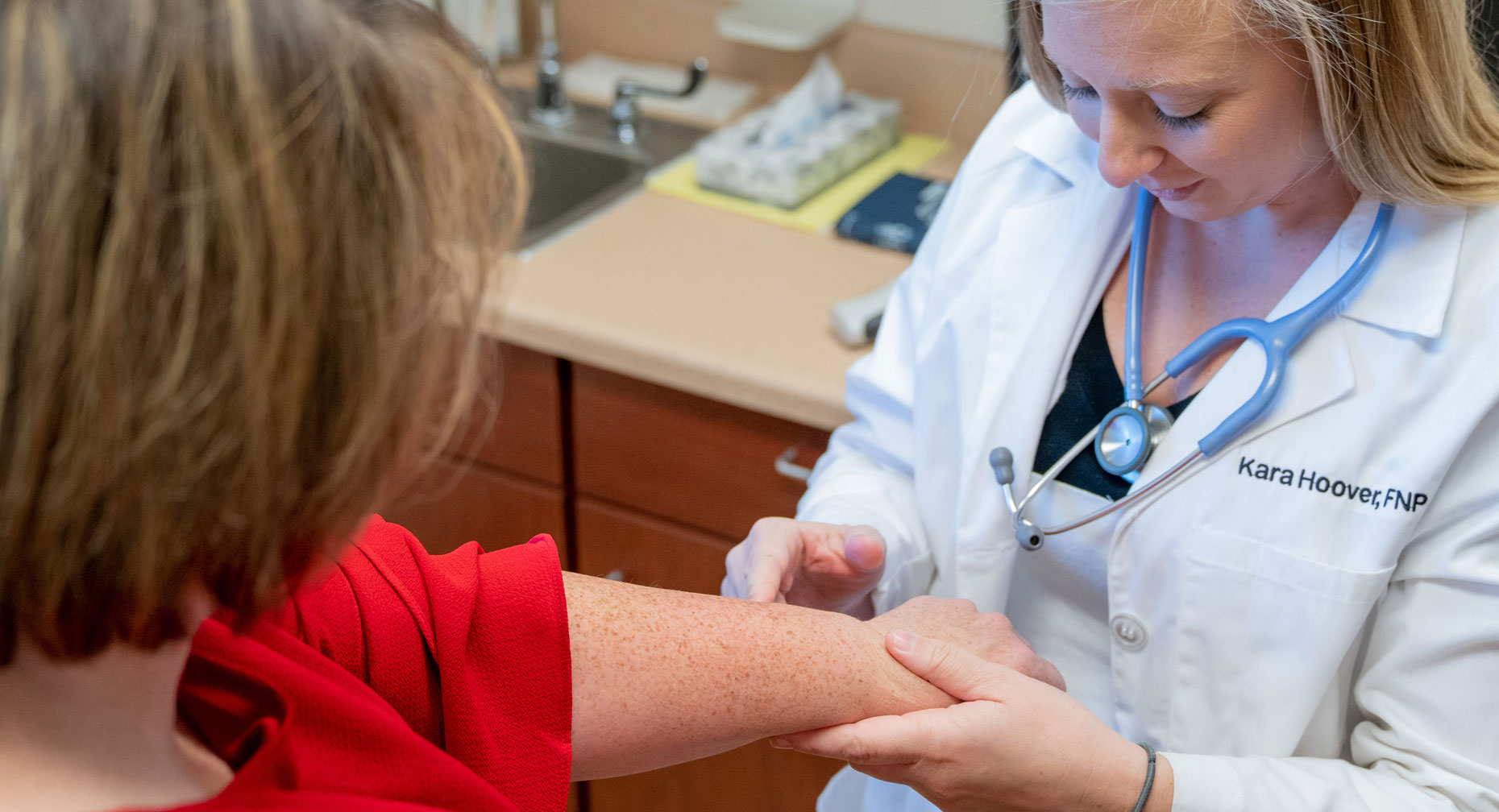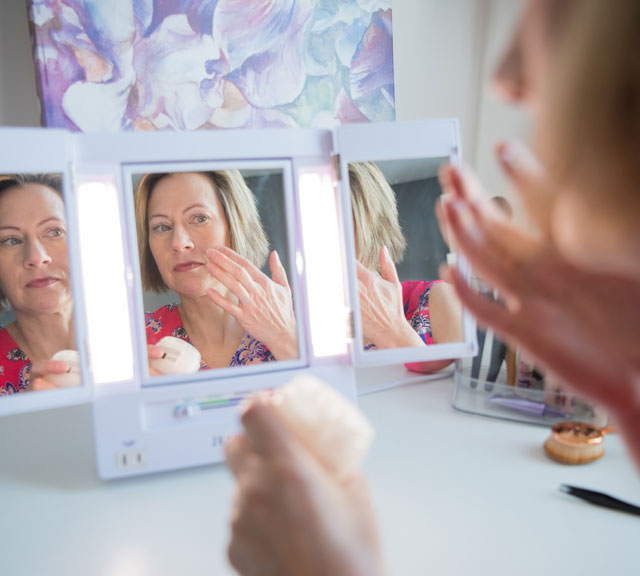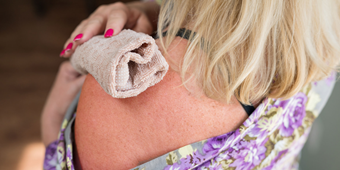Banish Those Annoying Age Spots for Good

Find Your Perfect Match
Answer a few questions and we'll provide you with a list of primary care providers that best fit your needs.
Your grandmother might have called them liver spots, but age spots — those harmless but annoying brown spots on your skin — seem to signal to the world that you’re not as young as you once were. The good news? With a little determination and help from your dermatologist, you can take steps to fade or even eliminate them.
What Are Age Spots — and What Causes Them?
Age spots are changes in skin color that occur in older skin. They’re especially common after age 40. These flat brown or black spots are often caused by exposure to the sun or other sources of ultraviolet light (like a tanning bed). Bigger than freckles, they show up most often on the face, hands, arms, back and feet.
Age spots are generally harmless and require no treatment.
Can Age Spots Be Prevented?

Some sun is healthy for us — but too much tanning takes its toll. Years of spending time in the sun can lead to age spots. Protect yourself by taking these steps:
- Cover your skin with hats, long-sleeved shirts, long skirts or pants.
- Limit time in the sun, especially during midday, when sunlight is strongest.
- Use a broad spectrum sunscreen that helps protect against UVA and UVB rays and has an SPF rating of at least 30. Apply at least 30 minutes before you go out in the sun and reapply often. Remember to use sunscreen on cloudy days and in the winter, too.
What About Treatment?
Age spots are generally harmless and require no treatment. But if they bother you, talk with your doctor or dermatologist (skin doctor) about having them removed. Bleaching lotions and creams often use hydroquinone, a medicine that safely lightens dark skin areas. To see results, you’ll need to apply the product daily for weeks or even months. Talk with your doctor about which one is best for you.
Some people even swear by simple home remedies you can find in your kitchen — like lemon juice, buttermilk, honey, orange peel, potatoes and cucumbers.
You may also want to consider a higher-tech procedure to lighten your age spots. Procedures usually work faster than creams and lotions but also cost more and carry a risk of side effects. They include:
- Laser treatment: Just one or two laser treatments can treat age spots quickly, and the results usually last longer than those achieved with a skin-lightening cream. Side effects can include crusting or temporary darkening of age spots, but these disappear quickly.
- Cryotherapy: During this procedure, a dermatologist freezes the age spots. As the skin heals, it looks lighter. Treatment is quick but can be painful. It may cause temporary redness, blisters or swelling. Permanent side effects are rare, but can include darkening of an age spot, lightening of the skin around the spot or a scar.
- Microdermabrasion: A dermatologist will smooth away age spots. Temporary side effects include a mild redness that disappears within hours, or flaky skin for a few days. Studies show this can be highly effective, especially when combined with a chemical peel.
- Chemical peeling: This procedure is highly effective in treating age spots on the hands, and skin heals quickly.
With so many options available, talk with a dermatologist first. She has the expertise to create a treatment plan that’s right for you. But no matter which one you choose, remember that age spots can return. That’s why it’s important to remain vigilant in protecting your skin from the sun.
Find Your Perfect Match
Answer a few questions and we'll provide you with a list of primary care providers that best fit your needs.
Source: American Academy of Dermatology; Medline Plus; National Institute on Aging




